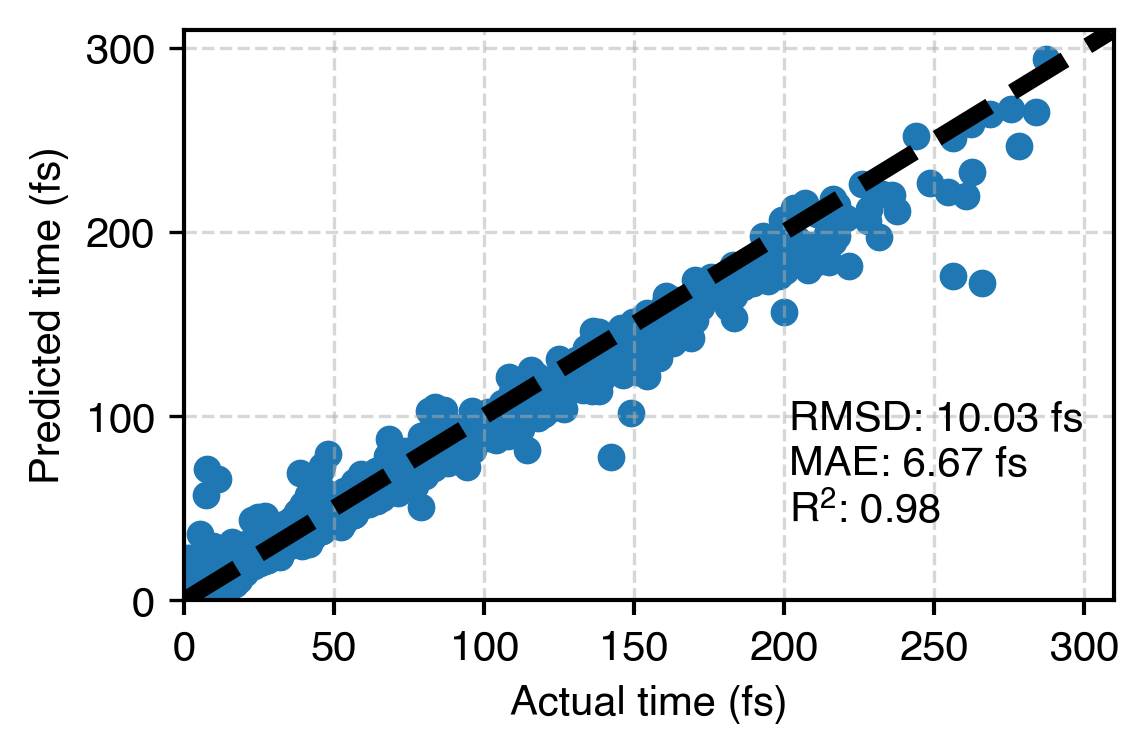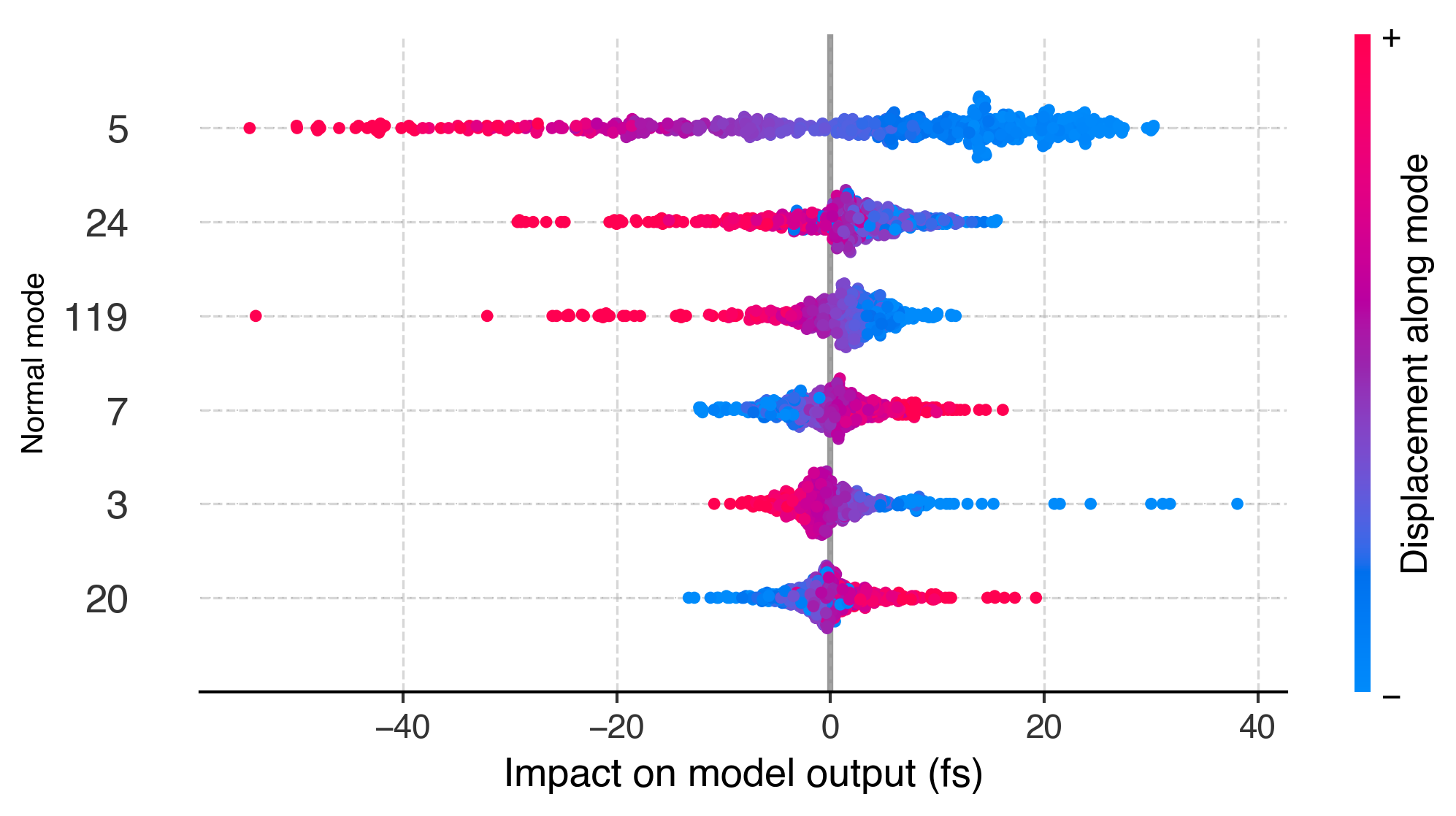chem_interp: use interpretable machine learning to explain complicated chemical reactions!
Usually molecular dynamics has so much information, it's tough to make sense of it all. But what if you could have a computer help you figure out what's really going on? That's the idea here -- have the computer learn what molecular motions lead to chemical reactions, and then distill this knowledge in a way humans can understand. First the computer learns, then it teaches.
Code was used in this paper:
Goings, J. J.; Hammes-Schiffer, S. Nonequilibrium Dynamics of Proton-Coupled Electron Transfer in Proton Wires: Concerted but Asynchronous Mechanisms. ACS Cent Sci 2020, 6 (9), 1594–1601.
Big-picture overview:
- Fit neural network to predict proton transfer times from ab initio molecular dynamics.
- Use interpretable ML methods to explain what molecular motions led to proton transfer.
 Predict Predict |
 Explain Explain
|
Top level has code for training the neural network. Once the model is trained, there are two types
of approaches for explaining the model in explanations: permutation importance and SHAP (SHapley Additive exPlanations).
Permutation importance is subtractive -- it tells you how much your model breaks when you scramble the data for that particular feature.
SHAP is additive -- it tells you how much a feature contributed to a model prediction.
If the two approaches identify features as being important, there's probably good reason to investigate further.
Directory structure:
.
├── README.md
├── 1-prepare_model.py
├── 2-keep_training.py
├── 3-evaluate_model.py
├── data
│ ├── 1-split_data.py
│ ├── 2-scale_data.py
│ ├── processed
│ ├── raw
│ └── split_raw
├── figures
├── model
├── explanations
│ ├── permutation_importance
│ │ ├── 1-run_permutation_importance.py
│ │ ├── 2-plot_permutation_importance.py
│ │ ├── data
│ │ └── figures
│ └── shap
│ ├── 1-run_shap_explainer.py
│ ├── 2-plot_mode_impact_scatter.py
│ ├── 3-plot_mode_impact_magnitude.py
│ ├── 4-plot_impact_vs_displacement.py
│ ├── data
│ └── figures
└── utils.py
